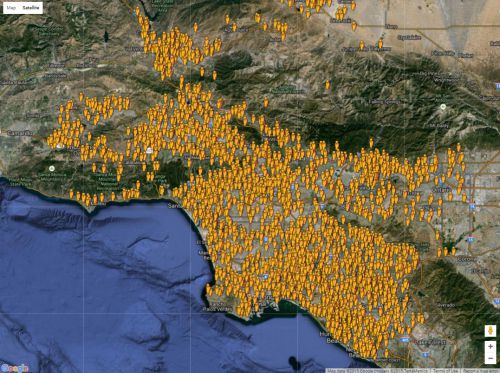

PulsePoint CPR Response App already downloaded more than 505,000 times--more than 16,500 cardiac arrest responders alerted to date.
REDMOND, WA--For the first time, CPR guidelines issued by the American Heart Association (AHA) recommend that communities consider using social media and mobile app technology to alert CPR responders when someone nearby suffers sudden cardiac arrest. The new guidelines cite studies that show emerging mobile technologies can result in a “higher rate of bystander-initiated CPR.”
The leading bystander response mobile application, PulsePoint Respond, alerts users when a sudden cardiac arrest occurs in a nearby public place, directs them to the patient location and provides CPR guidance while paramedic units are en route to the call. The app also notifies users of the closest available Automated External Defibrillator (AED).
To date, the PulsePoint app has been downloaded more than 505,000 times and has alerted more than 16,500 responders to the need for CPR in more than 6,500 suspected sudden cardiac arrest incidents. PulsePoint is now active in more than 1,200 communities in 24 U.S. states and Canadian provinces.
The PulsePoint app has played a key role in saving several lives. The first documented PulsePoint save involved a 57-year-old truck driver near Portland, Oregon, who suffered sudden cardiac arrest outside his gym and received CPR from a PulsePoint responder. In Spokane, Washington, a five-week-old infant received CPR from a nearby off-duty EMS volunteer working at his job as a mechanic. In Sunnyvale, California, a 63-year-old father of two collapsed on a soccer field and received CPR from a college student living nearby who received a PulsePoint alert on his mobile phone.
“PulsePoint-connected communities don’t need to rely on the luck of having a CPR-trained citizen witness a cardiac arrest,” said Richard Price, President of the PulsePoint Foundation. “By directly notifying those who are qualified and nearby, PulsePoint helps put the right people in the right place at the right time. PulsePoint builds on the good work that a community has done with CPR training and AED placement and improves the efficiency and use of these resources. Two-thirds of our 24-hour healthcare professionals - firefighters, paramedics, police officers, nurses, doctors - are off-duty at any one time. With PulsePoint, responders like these are available to assist if they are made aware of an urgent need nearby.”
The PulsePoint apps were created by and are a product of the PulsePoint Foundation. Physio-Control is the foundation’s implementation partner and provides services to integrate PulsePoint with public safety agency dispatch and communication systems.
“Apps like PulsePoint can help save lives,” said Brian Webster, President and CEO of Physio-Control. “This new AHA guidance is a strong call to action. Quick bystander response to sudden cardiac arrests – performing early CPR and finding and using an AED – is a vital part of an effective system of care. Mobile devices are already in millions of hands – PulsePoint Respond puts lifesaving skills and awareness into those hands.”
“The PulsePoint mobile device system, for the first time, changes the old paradigm of waiting for trained EMS responders to arrive on scene,” said Dr. Bentley Bobrow, Medical Director, Bureau of Emergency Medicine and Trauma Services, Arizona Department of Health and past Chair of the American Heart Association Basic Life Support Subcommittee. “PulsePoint allows communities to harness the enormous life-saving potential of their citizens, many of whom are ready and willing to perform CPR and use an AED in the most critical minutes before trained EMS providers can arrive.”
Information on how to download the free PulsePoint app is available at this site. Public safety agencies interested in becoming PulsePoint-connected can learn more here.
SOURCE: Business Wire
